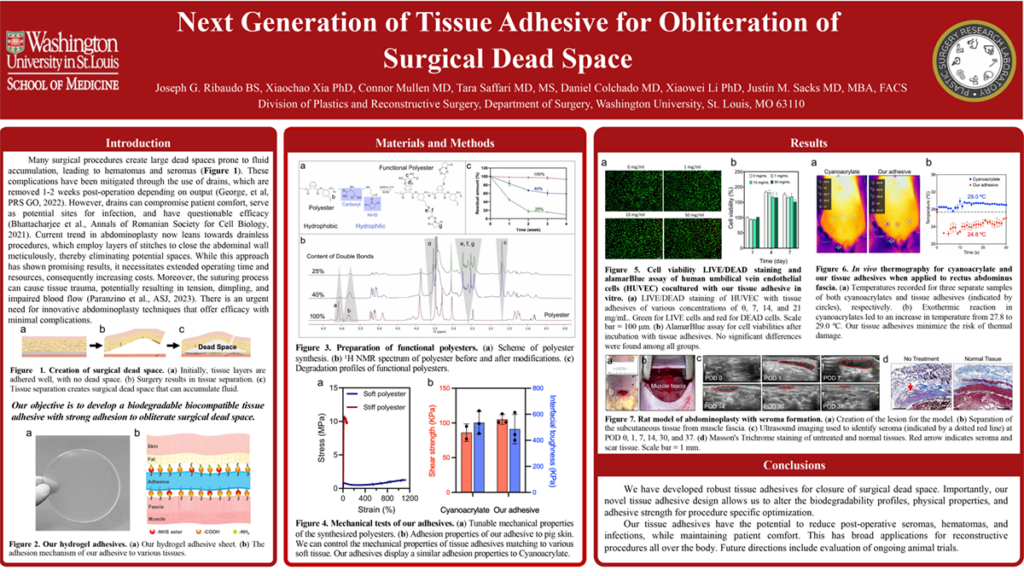
Introduction: Many surgical procedures create large dead spaces prone to fluid accumulation, leading to hematomas and seromas. Drains are used to prevent these complications, but they often cause patient discomfort and have potential for infection. Our objective is to develop a biodegradable tissue adhesive with strong adhesion and biocompatibility to obliterate surgical dead space.
Methods: We synthesized a hydrogel-based tissue adhesive with polyester backbone brush polymers featuring carboxyl and N-hydroxysuccinimide ester functional groups. Adhesive strength to rat subcutaneous tissue, fat and fascia was evaluated using a universal testing machine (n=3). We evaluated the heat release of our adhesive when applied to rat rectus abdominus fascia (n=3) using a FLIR camera. Cyanoacrylate was used as control. Cytocompatibility of our adhesive was tested at various concentrations (0, 7, 14, and 21 mg/mL) on human umbilical vein endothelial cells, using LIVE/DEAD staining and the alamarBlue. Lastly, we varied the percentage of double bonds in our adhesive (100%, 40%, and 25%) to test tunable biodegradability. Each was placed in PBS for four weeks and was weighed weekly.
Results: The shear tests demonstrated similar strength between our tissue adhesive and cyanoacrylate for subcutaneous tissue to fat (27.9 vs. 26.0 kPa, p=0.58) and subcutaneous tissue to fascia (28.7 vs. 25.0 kPa, p=0.76). Thermal analysis demonstrated that cyanoacrylate led to a peak tissue temperature of 29 ºC, compared to 24.8 ºC for our adhesive. After 24 hours, there was no significant decrease in cell viability at any concentration of our adhesive. Lastly, after four weeks, the 100% double bond adhesive retained nearly its original weight, the 40% double bond adhesive was 60% of its original weight, and the 25% double bond adhesive was 15% of its original weight.
Impact: Our novel tissue adhesive has demonstrated strong adhesion, tunable biodegradability, and biocompatibility. It has potential to obliterate dead space from surgical procedures in any area of the body. Its subcutaneous use may provide a comfort and safety advantage for use in many procedures, decreasing drain usage and incidence of seromas and hematomas.
Organization: Washington University in St. Louis
Ribaudo JG, Xia X, Mullen C, Saffari T, Colchado D, Li X, Sacks JM